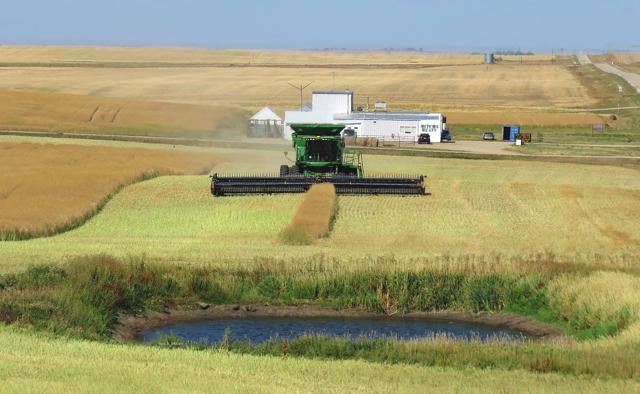Producers are hard at work bringing in the 2017 harvest. The crop yields this year are extremely variable depending on the field and location. Generally, the quality is good across the province compared to last year which was affected by so much disease, said Brent Flaten, crop specialist with Saskatchewan Agriculture. The current crop year has not seen the bleaching and blight that was experienced last year, but there are some reports that the durum is light and has run out of moisture.
Moreover, there has been a lot of variation in crop quality depending on moisture levels. Some areas had thundershowers that helped crops to fill out, whereas in other areas of the province some crops had difficulties filling out because of hot, dry conditions. The north had comparatively more and timely rainfall and they are expecting above average quality and yields, Flaten noted. Yet, between Highway 16 and Highway 1, rainfall was patchy, but it was extremely dry south of Highway 1 and west of Weyburn where there was a definite impact on crop development.
The crops set their maximum yield potential early in the growing season. There were problems reported with pulses where the crop died out prematurely, leaving immature and mature lentils in the same field. Plants dried out too quickly and the seed didn’t have a chance to mature.
Oilseeds are extremely variable. Crops yielded better than expected, but it still was an average or below average crop yield. At the other end of the spectrum, some crops are very poor. Chickpeas and mustard generally have been showing lower yields in the southwest. The hybrid canola was able to better withstand the drought-like conditions and produce a greater yield compared to open pollinated varieties. The hybrid has a more aggressive tap root that penetrates deeper into the soil and is more efficient at getting soil moisture. There are reports in the south that some barley has been harvested as greenfeed rather than waiting for full maturation of the crop. Some ranchers are reported to be tapping into reserve hay from last year’s supplies due to the short hay crop, while others will be buying hay from farmers further north. Â
Differences resulted from the variable rainfall experienced as well as differences in the soil type. The heavier clay soils hold more moisture and crops were able to develop longer than expected.




